Health
Makerere & Johns Hopkins Universities Release Report on Speed and Helmet Use in Kampala
Published
2 years agoon
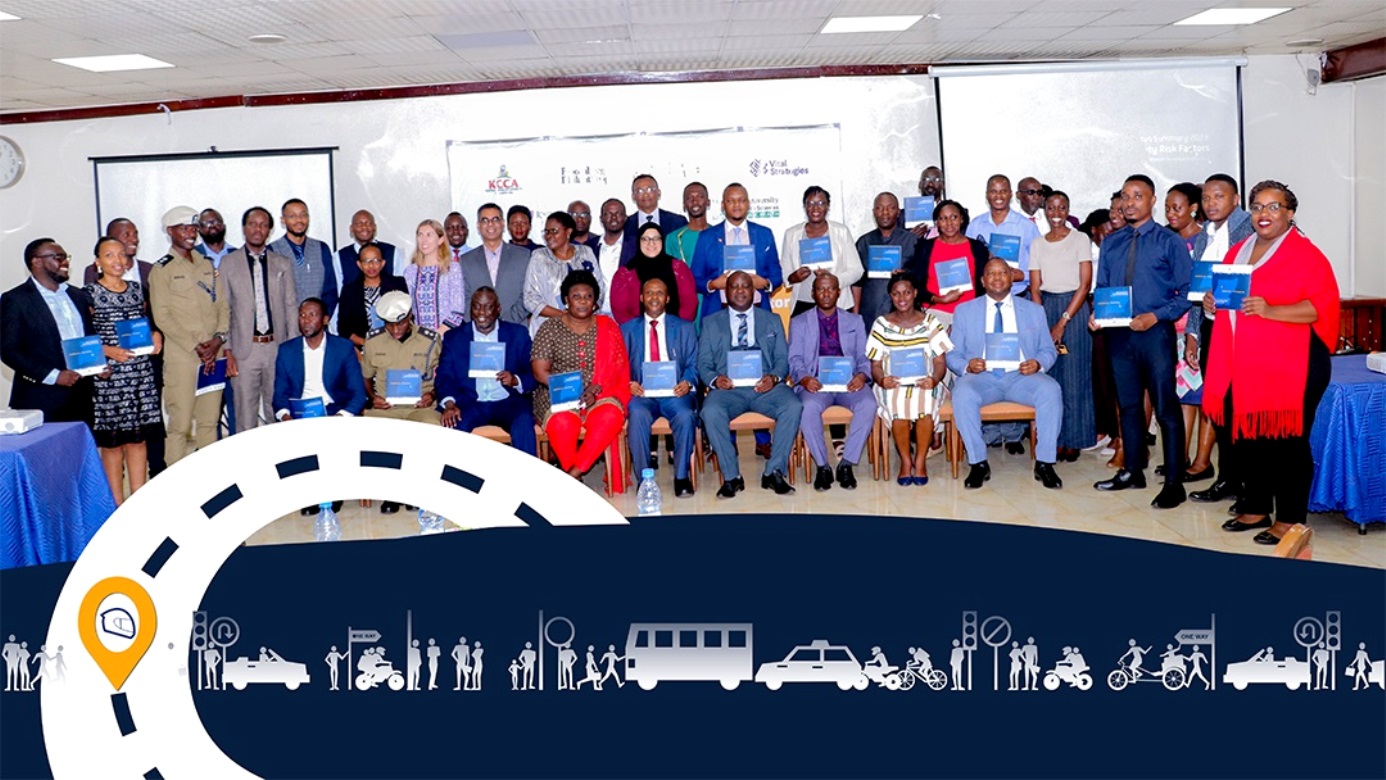
Makerere University School of Public Health (MakSPH) and the Johns Hopkins International Injury Research Unit (JH-IIRU) have launched the status summary report 2023; Road Risk Factors for Kampala, Uganda, in partnership with Kampala Capital City Authority (KCCA) and Vital Strategies.
The report was launched at Hotel Africana in Kampala on January 16, 2024. It delineates key findings, including the average speed of speeding vehicles at a high average of 57km/hr, higher speeds on roads partially accessible to pedestrians compared to roads freely accessible to pedestrians. Also, helmet usage remains low among motorcyclists and is almost non-existent among passengers, contributing to a rise in accidents and fatalities since 2020.
There has been a variable trend in the reported numbers of deaths and serious injuries since 2018. Specifically, in 2022, there was a 1% increase in reported deaths compared to 2021, while serious injuries witnessed a 4% decrease during the same period.
In 2018, a total of 294 death were recorded, 315 recorded in 2019 while 236 were recorded in 2020. In 2021, there were 419 road traffic death and 425 recorded in 2022. Motorcyclists accounted for nearly half (49%) of the reported deaths followed by pedestrians made up 44% of deaths. In a bid to improve road safety by providing quality data, the research the Bloomberg Philanthropies Initiative for Global Road Safety (BIGRS) made roadside observations on speed and helmet use in Kampala City.
The researchers made six observation rounds citing 500,000 for speed and 600,000 cyclists to determine helmet use. The results, based on data collected between February 2021 and October 2023 indicate that the mean speed among speeding vehicles was high mostly among sport utility vehicles (SUVs) at 10%, sedans/saloons at 9%, minibuses/minivans at 8), and pickup/light trucks at 7%. Five percent of the observed vehicles were exceeding the posted speed limit.
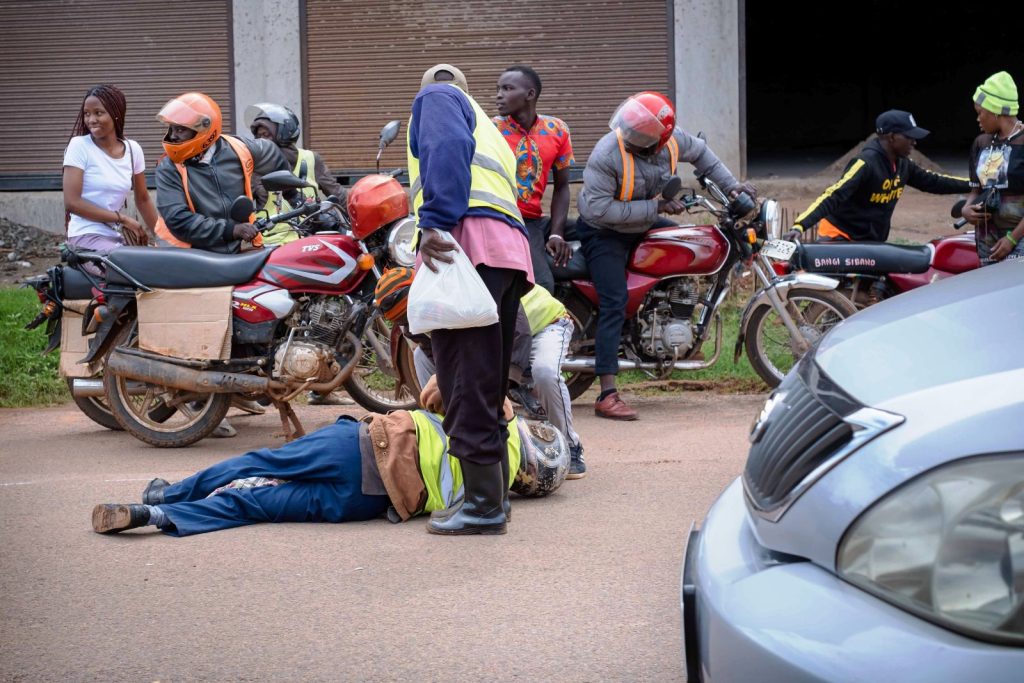
Speeding in Kampala
Presenting findings, Mr. Bonny Balugaba, a Researcher based at the Trauma, Injuries and Trauma Unit of MakSPH noted that the international best practices for speed management recommend a safe speed of 30 km/h on roads where conflicts between cars and unprotected users are possible. Also, 50 km/h speed is recommended at intersections where side-on conflicts between cars may occur. This is particularly applicable in urban areas.
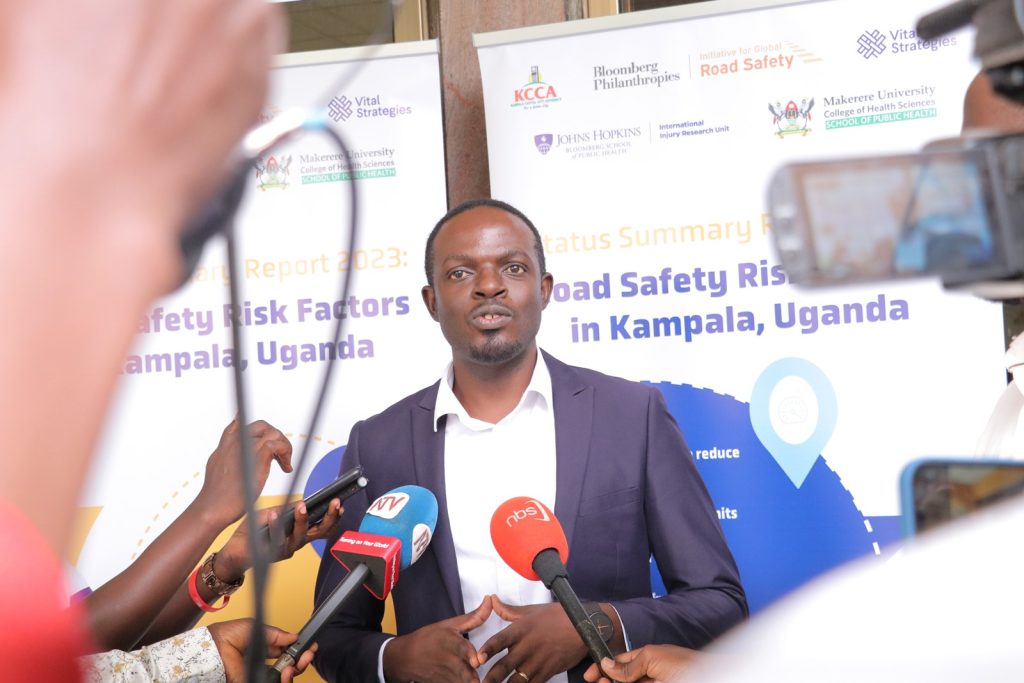
“If in Kampala we are seeing 57km/h speed, it means that we are way above the recommended speed limits and we know that beyond 40km/h, the chances of survival of someone that has been knocked are very minimal,” says Balugaba.
The researchers recommend enforcing a 50 km/h speed limit in metropolitan areas and a 30 km/h limit in places where motorized traffic interacts with bikes and pedestrians. In order to safeguard vulnerable road users, particularly the Ministry of Works and Transport and the Kampala Capital City Authority, it suggests implementing speed-calming techniques including bumps and signage as well as designating low-speed areas.
Investigators further advise the Kampala Metropolitan Traffic Police to increase enforcement, especially on local roads and on vehicles such as SUVs, sedans, pickup trucks, minibuses on routes with limited pedestrian access. It is recommended that public awareness campaigns and enforcement measures regarding the dangers of speeding be regularly monitored and evaluated to ensure continued efficacy.
Balugaba noted; “Mass media is good but if you are telling me the dangers of speed but am not apprehended on speed then it tends to entertainment. You come, entertain me with your campaign and adverts and go away but you are not enforcing.”
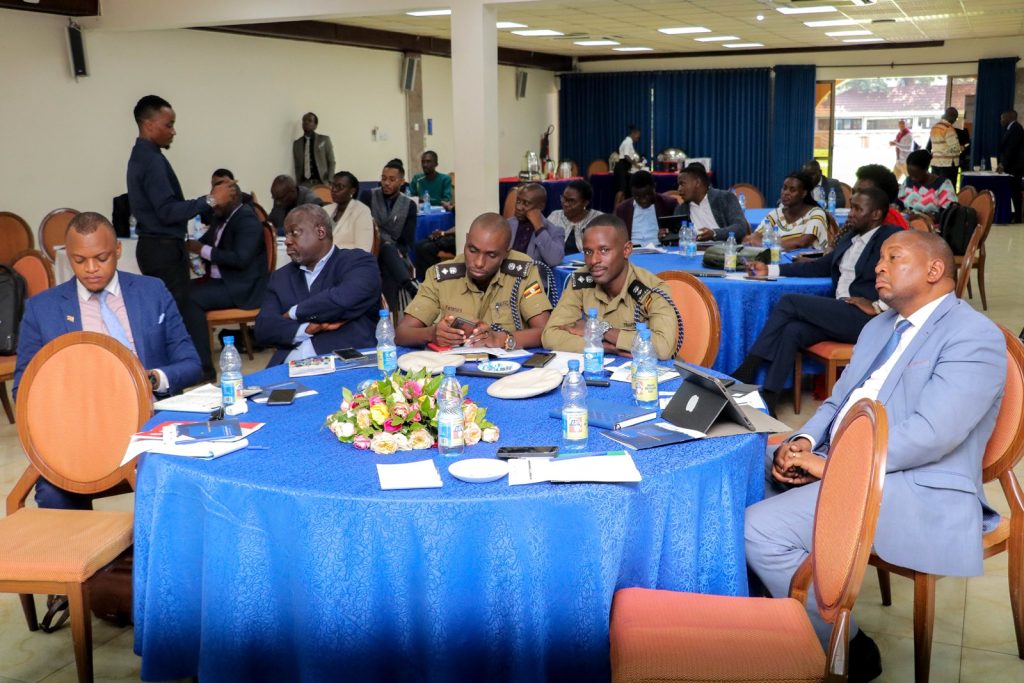
Helmet Use in Kampala
Helmet use compliance among motorcyclists was notably low at 39%, and even lower for passengers at 2%. This trend persisted on both local and collector roads (39%) and arterial roads (40%). During weekends, helmet use dropped by 20%. Ride-share motorcycle drivers, particularly Safe Boda, exhibited the highest compliance at 84%, surpassing commercial motorcycle drivers (50%), taxi drivers (55%), and private/government motorcycle users (55%).
From 2020 to 2022, 210 motorcycle occupants and 185 pedestrians lost their lives. Notably, 40% of pedestrian fatalities resulted from collisions with cars, SUVs, or pickups, whereas 36% of motorcycle deaths were attributed to accidents involving other motorcycles.
“We saw that only 2% of the motorcycles are using helmets. This really means that the situation is still bad. We need to put in place measures knowing that helmets save those that are wearing them,” says Balugaba.
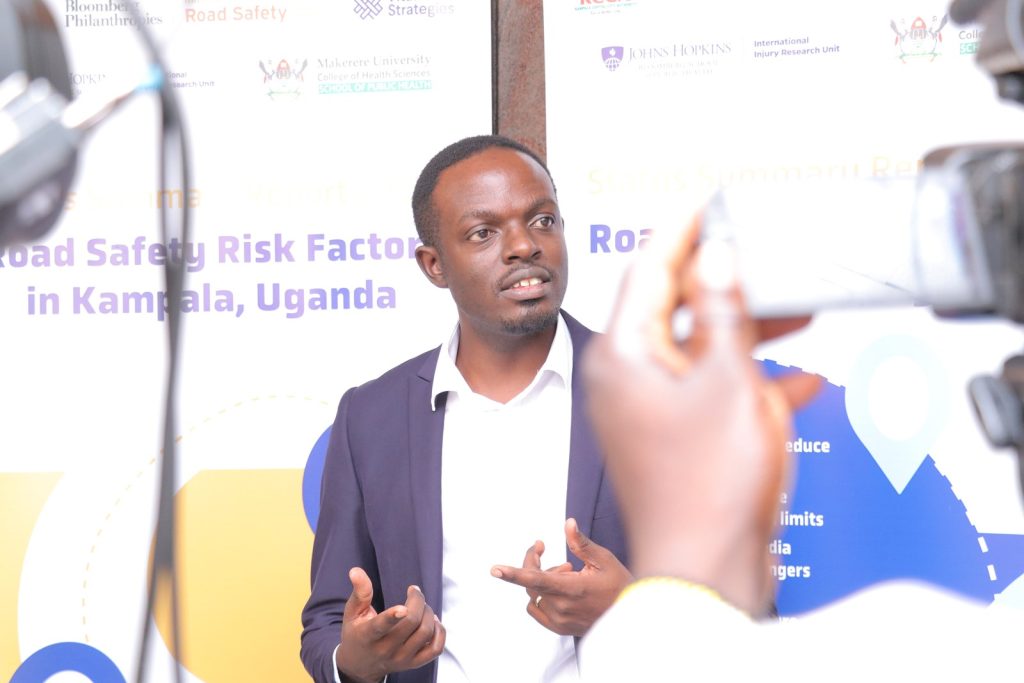
Adding that while four of every 10 riders are wearing a helmet but less than one in every 10 passengers has a helmet. “is it that passengers have harder heads than riders? That in case they are involved in a crash, they don’t get affected? These are issues we need to work on.”
While sharing the data outcomes, Dr Raphael Awuah, the African Regional Advisor on Data and Surveillance for Vital Strategies notes that while many of the cities in Africa, pedestrians constitute the majority fatalities, this is different for Kampala. “For most parts of Africa, we see that pedestrians account for most fatalities. However, in Kampala, this is not the case. We see that majority of the deaths are among the motorcyclists and this trend has been observed since 2018. So clearly this emphasizes the need to prioritize the vulnerable road users in Kampala particularly motorcyclists and pedestrians.”
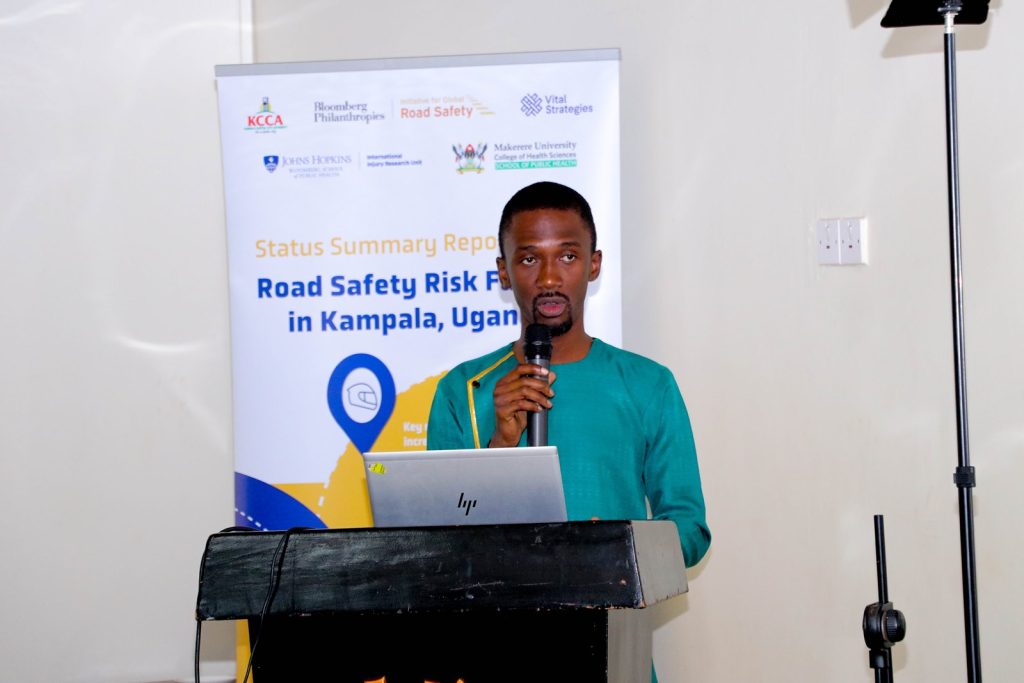
The top five locations for pedestrian fatalities and serious injuries from 2019 to 2022 are high-capacity roads: Kampala Road, Jinja Road, Bombo Road, Entebbe Road, and Masaka Road.
The distribution of motorcycle fatal crash locations does not exhibit any clear pattern, but there is a noticeable concentration on high-capacity highways. Kampala Road, Masaka Road, Bombo Road, Kisaasi Road, and the Northern Bypass are the top five places.
“While it is true that these are high capacity roads, speeding is probably one of the causes of fatalities. I hope we will use this data to inform the discussions, actions, plans, strategies to reduce the outcomes that I have just shared,” observed Dr Raphael Awuah.
The Kampala Metropolitan Traffic Police has been urged to increase the enforcement of proper helmet use, with a focus on passengers, taxis, and commercial motorbikes on arterial, local, and collector roads all week round. Also, KCCA and the Ministry of Works and Transport may want to start public awareness programs promoting the appropriate use of helmets and advocate for sanctions and fines for improper helmet wear in conjunction with coordinated increased enforcement.
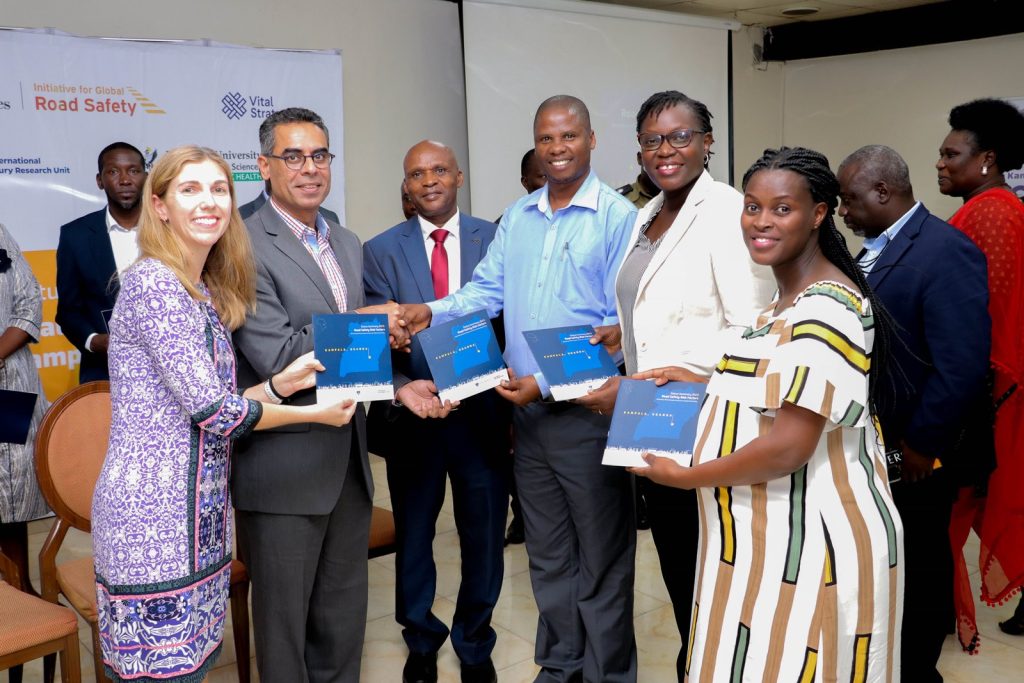
“This is about behavioral change. It is extremely difficult. We are all humans. All of us know that speeding is bad for us but when we get behind the wheel, we will still try to speed. All of us know that wearing a helmet will protect our heads, but only 2% of us wear helmets when we are riding on a motorcycle. So what else is needed? Yes, knowledge is important, it is important to tell people why they should be putting on these helmets and the consequences they will face if they don’t wear them but it is also important to have reinforcing mechanism. Yes, mass media campaigns are important but equally important is visible and widespread enforcement,” explained Dr. Abdulgafoor Bachani, Director of JH-IIRU.
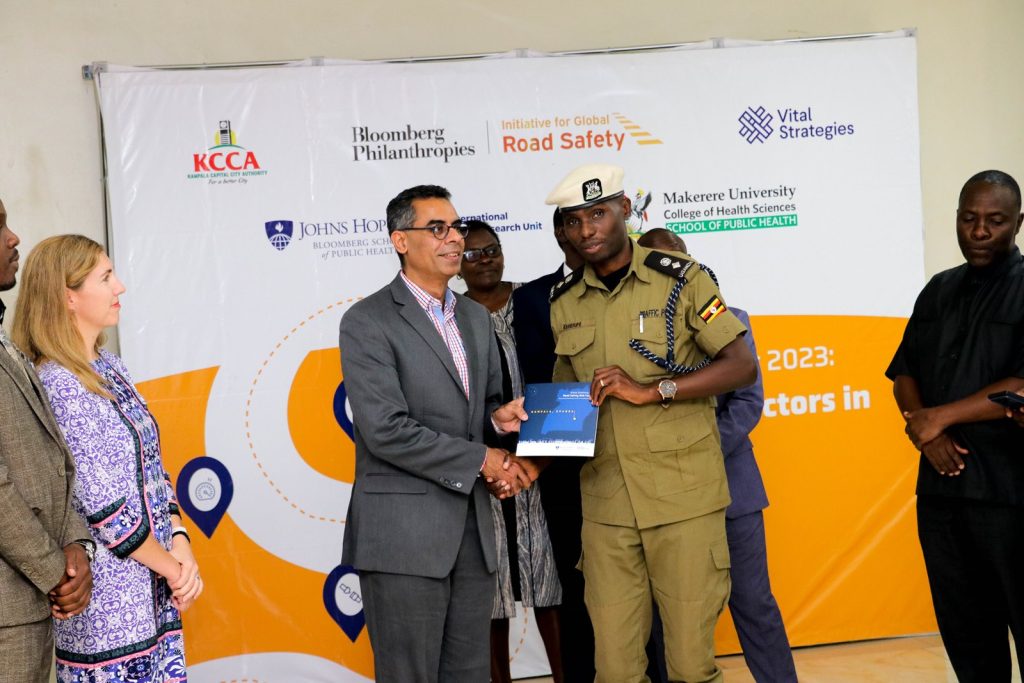
On his part, Dr. Fredrick Oporia said “Road safety is an issue of concern to everyone. To improve this safety, we must have high-quality data on the risk factors and share it with our stakeholders. Most importantly, we need local stakeholders who are charged with making laws and policies for the country because this is a systems issue that calls for systems thinking. We must involve the local to get the attention of the international.”
SP. Michael Kananura, spokesperson, Traffic and Road Safety Directorate, Uganda Police Force says there is a regulation on helmet use targeting not only riders but also passengers, although he acknowledges challenges with enforcement. He calls on the public support these public health and road safety measures.

“We really appreciate our colleagues from MakSPH and the rest for this work and the academia generally for the work you are doing in as far as research is concerned and also being able to share with us this data. We also use this data to improve in our enforcements. It guides us on areas of improvement and prioritization. The data really is so helpful to us and we also continue to work to see how we can improve in that area. We have a unit in traffic directorate that is for enforcement basically,” SP Kananura.
Comments from KCCA leadership
Hon. Kizza Hakim Sawula, the lord councilor from Lubaga and Executive Secretary and a Minister for Works and Physical Planning –KCCA noted that one of the causes of this these accidents in the capital city is the poor-quality roads that wear out easily with numerous potholes and the meagre maintenance budget appropriated by parliament to the city authority.
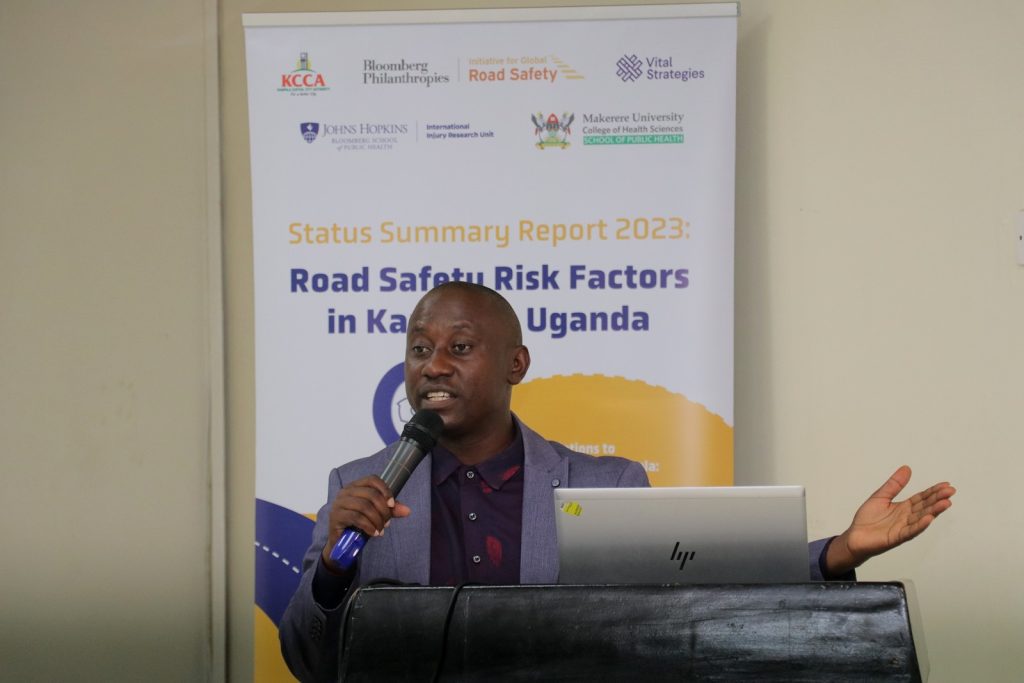
“Can you imagine that each kilometer of the road within Kampala is constructed at an average cost of 14 billion shillings. For the last three budgets, we were getting 78bn but but in the current budget, we received only 43 billion shillings for the entire capital, for the entire financial year for roads, drainages and traffic lights. How many kilometers are we looking at? 3 kilometers for a financial year, 43 billion shillings?
We used to get Shs26 billion from the national road fund, for road maintenance every financial year. You can confirm from the mayors and load counselors here. This time around, we received only 11 billion for all the maintenance. Now, what do we expect out of that money? So, the task is upon the members of the Parliament to improve on the budget. We have 2,110 kilometers of roads within Kampala. Only 654 kilometers are paved, when shall we complete the entire balance? So, we need a budget, enough budget from the members of parliament. When we talk to MPs they only talk about loans we get from development partners which is usually for new roads,” explained Hon. Sawula.
Concerned, Nakawa Division Mayor, Paul Mugambe said it was disheartening that many people continue to lose their lives prematurely. He cited that not every death is predetermined by the Lord. “Driving at excessively high speeds, and resulting in a crash is not the Lord’s decision. Many individuals lose their lives prematurely due to reckless behavior, and it’s truly regrettable.”
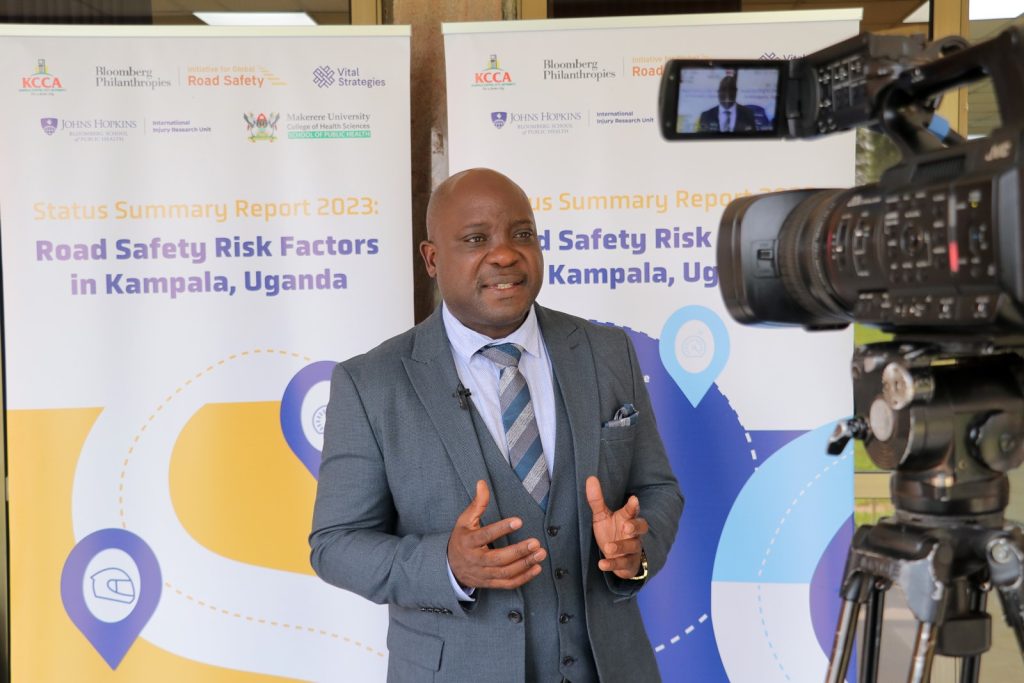
Mr. Mugambe urged Police to use the evidence provided to improve on the enforcement of road traffic laws and regulations.
Prof. Elizeus Rutebemberwa, the Deputy Dean, MakSPH thanked the Bloomberg Philanthilopies “for supporting us to help ourselves” and the JH-IIRU for the technical support to the TRIAD unit, the university and many partners. He also noted that the urban population in Uganda is steadily increasing and called for proactive and inclusive urban planning.
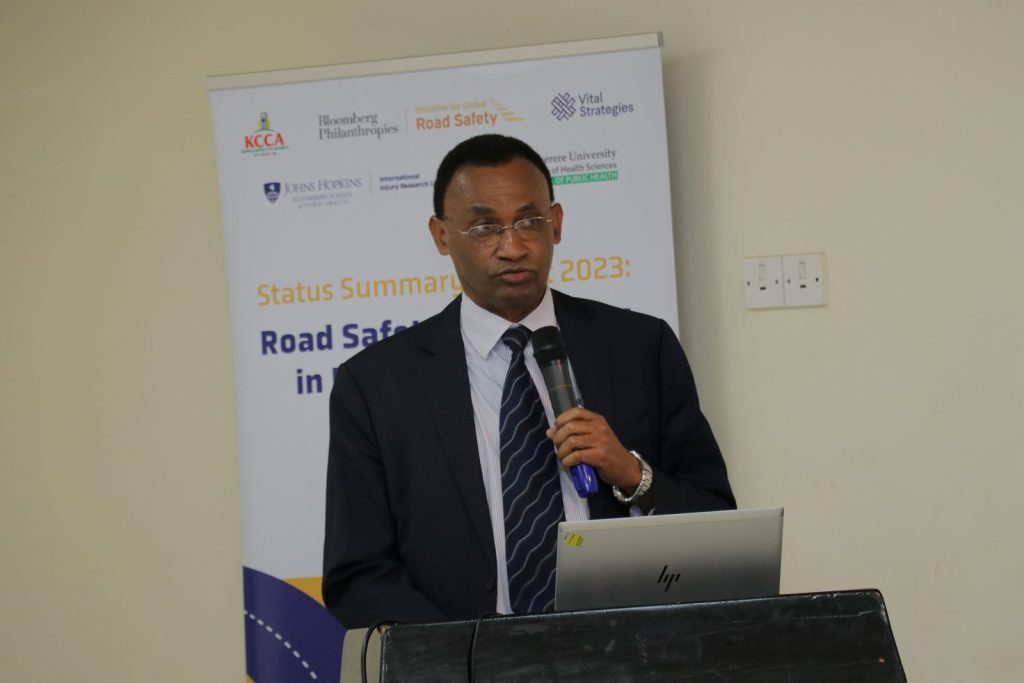
“From 2012, the urban population was 20%. In 2022, which is one year and a half ago, it was 26%. So, one in four people in Uganda were in urban areas. Now in 2040 it is estimated that 33 million would be living in urban areas and that would be 46%. So, it’s not getting better, it’s getting worse. So, we need to manage our urban areas so that people don’t shift from the rural areas to come to die in urban areas,” said Prof. Rutebemberwa.
He called on government and the city authority to fast-track mass transport systems to reduce congestion on the roads. “Look at the traffic that come to Kampala. They are in private cars and each one is carrying one person. In very few cases, two people. Now, if you have all those cars for one kilometre stretch, you could actually park all those people in one bus. And you have all space and you reduce the pollution, why should this be difficult for people to know that. For you to have an organized urban area, you need mass transport. You don’t need to research to know that. So why don’t we have them? Some of these things, some of them we talked about in the national drive, dedicated walk lanes.
According to Becky Bavinger, from the public health area of Bloomberg Philanthropies, road traffic injuries are the leading cause of death for people aged 5 to 29. She mentioned that the fatalities from road traffic are at a crisis level in Uganda.
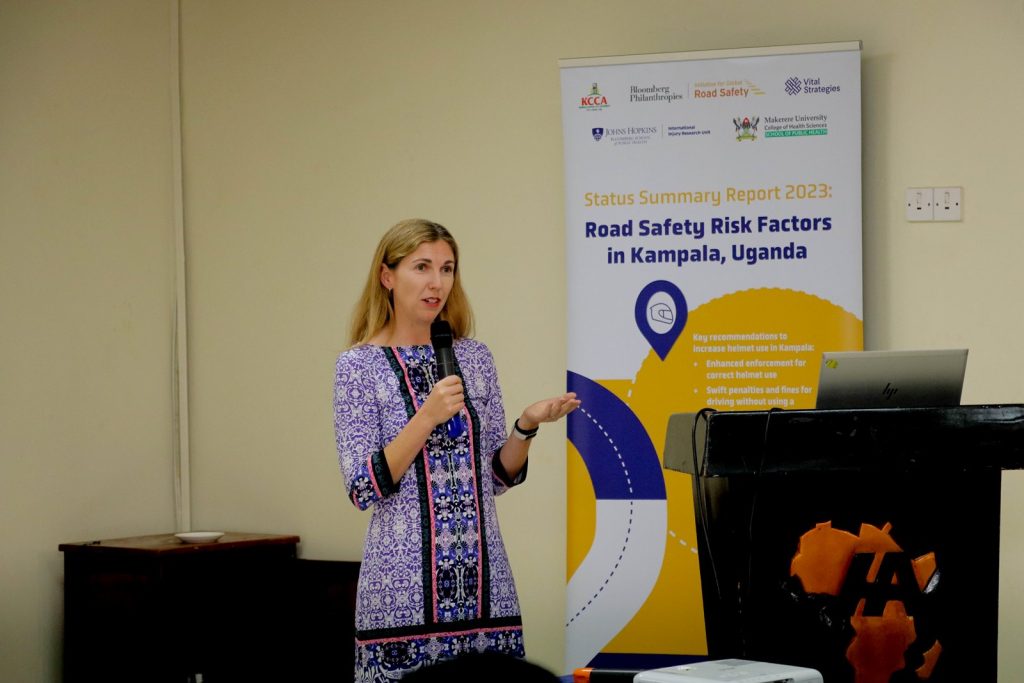
“I want to say this again. This is the leading cause of death. It’s not HIV. It’s not tuberculosis. It’s real traffic injuries for people aged 5 to 29. Those are the young people. We had the mayor talking about the economic impact as well. These are young people going to school, getting trained, coming back into your workforce, starting out in the workforce, and you’re losing their lives. There’s a forthcoming research from the Road Safety Coalition Uganda looking at the loss of GDP from road traffic injuries. In 2017, your government reported 3,500 deaths. The WHO estimated it was double that at about 6,000. It has gone up. In 2021, your government reported 4,159 deaths. Again, the WHO estimated it was about double that at 7,300. This is not good. This is a crisis and we need everyone working together on it,” Ms. Bavinger said.
She noted that Bloomberg Philanthropies will be working over these next two years with KCCA and with the government of Uganda to institutionalize data collection and the surveillance of road traffic injuries and deaths to improve its accuracy.
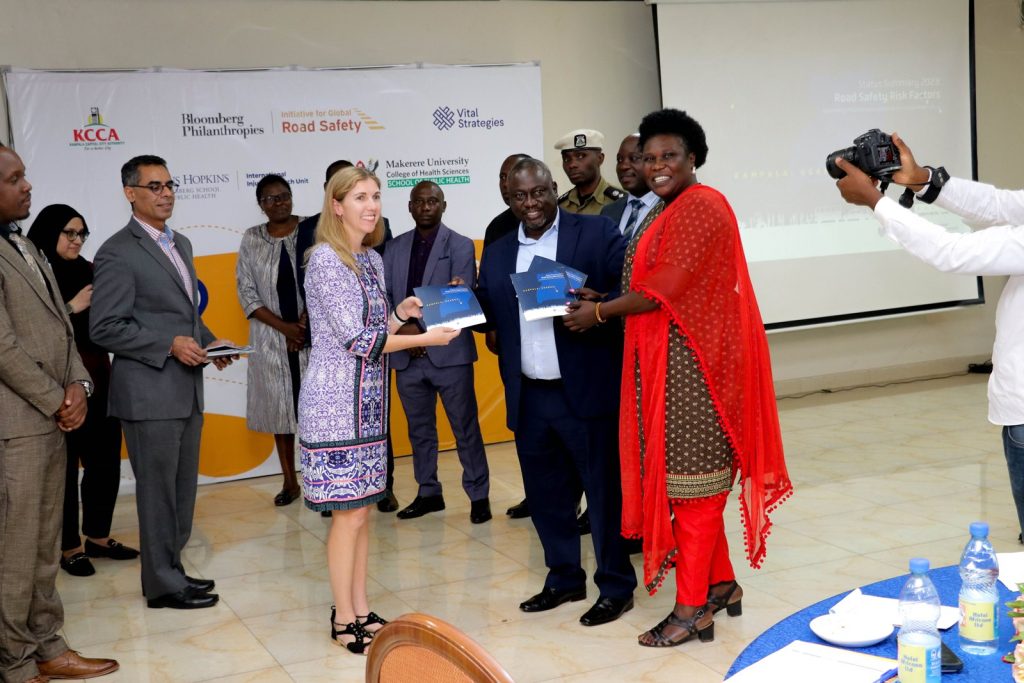
“These data are critical to forming your decision making. I just want to conclude by saying congratulations to Makerere University, to Johns Hopkins University, but ultimately to KCCA for launching this report, for conducting this research and this is not easy research to conduct. To the stakeholders, use these data. Please, please do not go home and put this report on your shelf. Look through it. Talk to the journalist. Get the media to write stories about this, let everyone know what is happening,” said Bavinger.
You may like
-
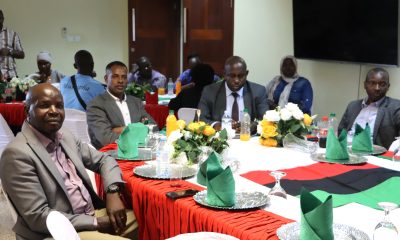

EfD Uganda Marks 2025 Milestones, Sets Strategic Path for 2025–2029
-
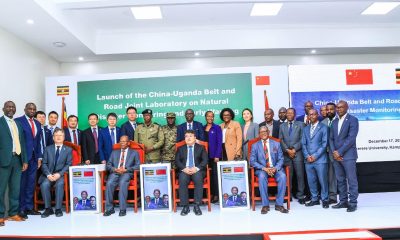

Makerere University and Tsinghua University Launch Landmark China–Uganda Joint Laboratory on Natural Disaster Monitoring and Early Warning
-
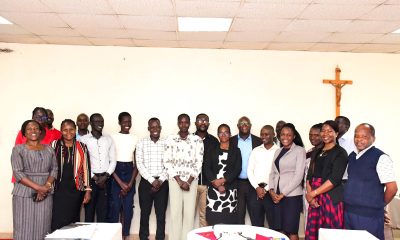

Facilitating Access and Participation through Higher Education Access Programmes and Connected Education for Students with Refugee Backgrounds: A Global South Delphi Study
-


VC Flags off 220 Strong Contingent to 20th AUUS Games
-


US$ 162m KEXIM Loan Approval Timely for Makerere University
-


Makerere University Explores Strategic Partnership with Tsinghua University in Safety Science, Disaster Resilience and Public Health
Health
Makerere University and Tsinghua University Launch Landmark China–Uganda Joint Laboratory on Natural Disaster Monitoring and Early Warning
Published
1 week agoon
December 19, 2025
Makerere University has taken a decisive step in strengthening Uganda’s and Africa’s capacity for public safety, disaster preparedness, and climate resilience with the official launch of the China–Uganda Belt and Road Joint Laboratory on Natural Disaster Monitoring and Early Warning, a flagship collaboration with Tsinghua University of China.
Launched during the Makerere University–Tsinghua University Symposium on Public Safety and Natural Disaster Management, the Joint Laboratory positions Makerere as a continental hub for cutting-edge research, innovation, and policy-relevant solutions in disaster risk reduction, early warning systems, and emergency response. The Laboratory will be hosted by Makerere University and is the only facility of its kind in Africa under this cooperation framework, underscoring its regional and global significance.
A Strategic Partnership Rooted in Research, Policy, and Practice
In his opening remarks, Prof. Barnabas Nawangwe, Vice-Chancellor of Makerere University and Ugandan Co-Director of the Joint Laboratory, traced the origins of the partnership to 2018, when a Makerere delegation visited Tsinghua University and the Hefei Institute for Public Safety Research. He recalled being deeply impressed by China’s advanced capacity in public safety research, disaster monitoring, and emergency management capabilities that directly respond to Uganda’s growing exposure to floods, landslides, epidemics, and other hazards.
The Vice-Chancellor noted that the successful establishment of the Joint Laboratory followed a competitive grant process under China’s Belt and Road Initiative, supported by the Government of Uganda and regional partners, including Nigeria and Côte d’Ivoire. He emphasized that the Laboratory aligns squarely with Makerere’s strategic ambition to become a research-led and research-intensive university, while also advancing its internationalisation agenda.

“This Laboratory will significantly enhance Makerere University’s ability to generate evidence-based research that directly informs government policy and public safety interventions. It will serve not only Uganda, but Africa at large,” Prof. Nawangwe said.
He further underscored the Laboratory’s national importance, noting that similar facilities in China are regarded as national-level laboratories, entrusted with supporting government decision-making and national resilience. Relevant Ugandan institutions, including the Office of the Prime Minister (OPM), UPDF, Uganda Police, Ministry of Health, and humanitarian actors, are expected to actively participate in the Laboratory’s work.
Tsinghua University: Advancing Science Diplomacy and South–South Cooperation
Speaking on behalf of Tsinghua University, Prof. Yuan Hongyong, Dean of the Hefei Institute for Public Safety Research and Chinese Co-Director of the Joint Laboratory, described the initiative as both a scientific milestone and a powerful demonstration of South–South cooperation.
He emphasized that natural disasters transcend national borders and demand collective, science-driven responses. By combining Tsinghua’s technological expertise, including satellite monitoring, AI-driven analytics, and integrated early warning systems, with Makerere’s deep regional knowledge and policy engagement, the Joint Laboratory provides a robust platform for innovation, applied research, and practical solutions tailored to African contexts.

The Laboratory will function not only as a research centre, but also as an operational platform for natural hazard monitoring, early warning, risk assessment, and capacity building, supporting Uganda and the wider African region in building more resilient communities.
Government of Uganda: Research as a Pillar of National Resilience
Representing the Office of the Prime Minister, Mr Frederick Edward Walugemba, reaffirmed the government’s strong support for the Joint Laboratory, recognizing research as a cornerstone of effective public safety and disaster management. The OPM highlighted its constitutional mandate to coordinate disaster preparedness and response through institutions such as the National Emergency Coordination and Operations Centre (NECOC).
He mentioned that the Office of the Prime Minister is committed to working closely with Makerere University and its partners, underscoring the importance of multi-agency collaboration, robust data systems, and timely policy advisories to address the complex, multidimensional nature of public safety challenges.
China–Uganda Relations and the Role of Science Diplomacy
Mr. WANG Jianxun, Commercial Counsellor of the Embassy of the People’s Republic of China in Uganda, lauded the Joint Laboratory as a concrete outcome of the growing China–Uganda Comprehensive Strategic Partnership. He emphasized that the collaboration reflects China’s commitment to knowledge sharing, technology transfer, and people-centred development, particularly in areas such as climate adaptation, disaster risk reduction, and sustainable development.
He also highlighted the Belt and Road Initiative as a framework that extends beyond infrastructure to include scientific cooperation, academic exchange, and innovation-driven development, with the Joint Laboratory standing as a model of how universities can advance diplomacy through science.
Makerere’s Multidisciplinary Strength at the Core
In his concluding remarks, Prof. Nawangwe reaffirmed Makerere University’s readiness to operationalize the Laboratory through a multidisciplinary research team spanning public health, geography, engineering, computing, artificial intelligence, social sciences, and the built environment.
He stressed that effective disaster management must integrate technology, human behaviour, governance, and community engagement, noting the importance of sociological insights in addressing risk perception and public compliance during disasters. Makerere will also engage emerging universities and regional partners to ensure the Laboratory’s benefits are widely shared.
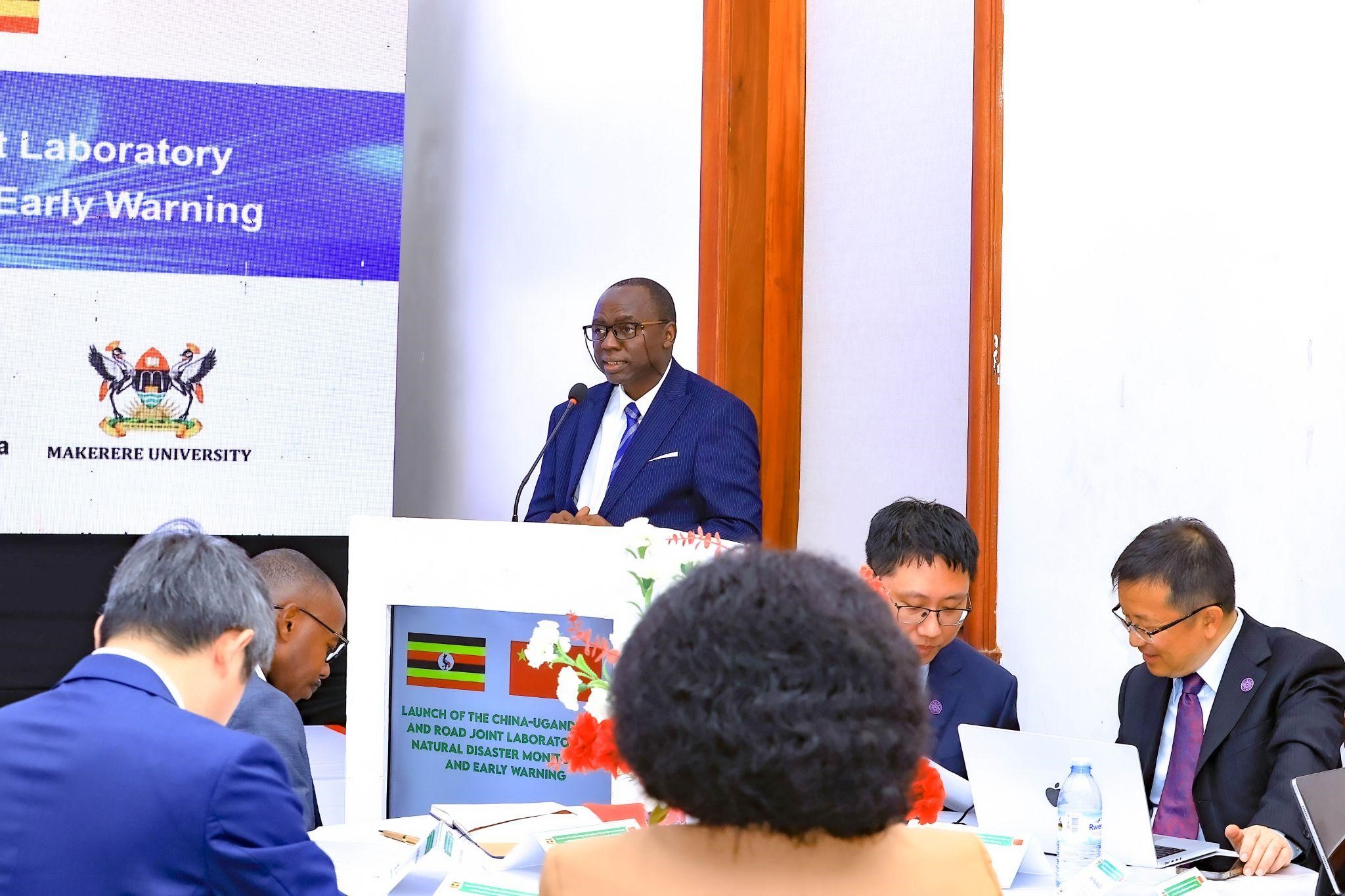
The Vice-Chancellor also commissioned an interim, multidisciplinary coordination committee to operationalise the Joint Laboratory, drawing expertise from health, climate science, engineering, artificial intelligence, social sciences, and government agencies.
Hon. John Chrysostom Muyingo Officially Launches the Laboratory
The Joint Laboratory was officially launched by the Honourable John Chrysostom Muyingo, Minister of State for Higher Education, who applauded Makerere University and Tsinghua University for securing the prestigious grant and advancing Uganda’s science and research agenda.

Hon. Muyingo reaffirmed the Government’s commitment to supporting research that informs national development, public safety, and disaster preparedness. He urged Ugandan researchers to fully leverage the partnership to learn from China’s experience in transforming research into actionable solutions for society.
“This Laboratory is a clear demonstration of how strategic international partnerships can strengthen national capacity, inform policy, and protect lives,” the Minister said, as he formally declared the symposium and laboratory launch open.
Positioning Makerere as a Regional Centre of Excellence
Makerere University already plays a critical role in public safety, disaster preparedness, and early warning through a range of research, training, and operational partnerships. Through the School of Public Health (MakSPH) and the Infectious Diseases Institute (IDI), the University has led national and regional initiatives in epidemic preparedness, emergency response, and early warning, including Field Epidemiology Training, risk prediction modelling, and multi-hazard risk assessments that inform district and national preparedness planning. A national assessment of 716 health facilities conducted by MakSPH revealed widespread exposure to climate-related hazards and systemic preparedness gaps, directly informing the Ministry of Health’s Climate and Health National Adaptation Plan (H-NAP 2025–2030)
Makerere has also been at the forefront of disaster risk reduction innovation and community resilience through the Resilient Africa Network (RAN), which has supported scalable, evidence-based solutions such as EpiTent, a rapidly deployable emergency health facility; RootIO, a community-based radio communication platform used for risk communication and early warning; and RIAP Horn of Africa, which advances climate-resilient water harvesting technologies for drought-prone pastoralist communities.

Earlier, the University led the USAID-funded PeriPeri U project (2014–2019) and a disaster management collaboration with Tulane University, strengthening applied research, training, and early warning systems across Africa, efforts that laid the foundation for RAN and Makerere’s current disaster resilience agenda.
In collaboration with government and international partners, Makerere has supported the strengthening of Emergency Operations Centres, including the development of Regional Emergency Operations Centre (REOC) dashboards to improve real-time coordination and situational awareness. IDI has further contributed to epidemic intelligence and early warning, supporting districts to update WHO STAR-based risk calendars, strengthen sub-national preparedness, and enhance real-time decision-making during outbreaks. Makerere teams have also been deployed regionally to support Marburg and Mpox outbreak responses in Rwanda and the DRC, while advancing outbreak modelling as an early warning tool for high-consequence infectious diseases.
Complementing these efforts, the Department of Geography, Geo-Informatics and Climatic Sciences conducts transdisciplinary research on floods, landslides, droughts, soil erosion, and land-use change, using geospatial analysis, earth observation, modelling, and participatory methods to translate complex data into actionable early warning and risk information for policymakers and communities. These ongoing initiatives collectively demonstrate Makerere University’s established capacity in public safety, disaster preparedness, and early warning, providing a strong operational and scientific foundation for the China–Uganda Belt and Road Joint Laboratory.
With strong backing from the Governments of Uganda and China, as well as leading international partners, the China–Uganda Belt and Road Joint Laboratory on Natural Disaster Monitoring and Early Warning is poised to become a regional centre of excellence for disaster risk reduction research, training, and innovation.
The Laboratory will contribute to improved early warning systems, faster emergency response, stronger policy coordination, and enhanced scientific capacity, cementing Makerere University’s role at the forefront of addressing some of the most pressing public safety challenges facing Uganda, Africa, and the global community.
Caroline Kainomugisha is the Communications Officer, Advancement Office Makerere University.
Health
Makerere University Explores Strategic Partnership with Tsinghua University in Safety Science, Disaster Resilience and Public Health
Published
2 weeks agoon
December 16, 2025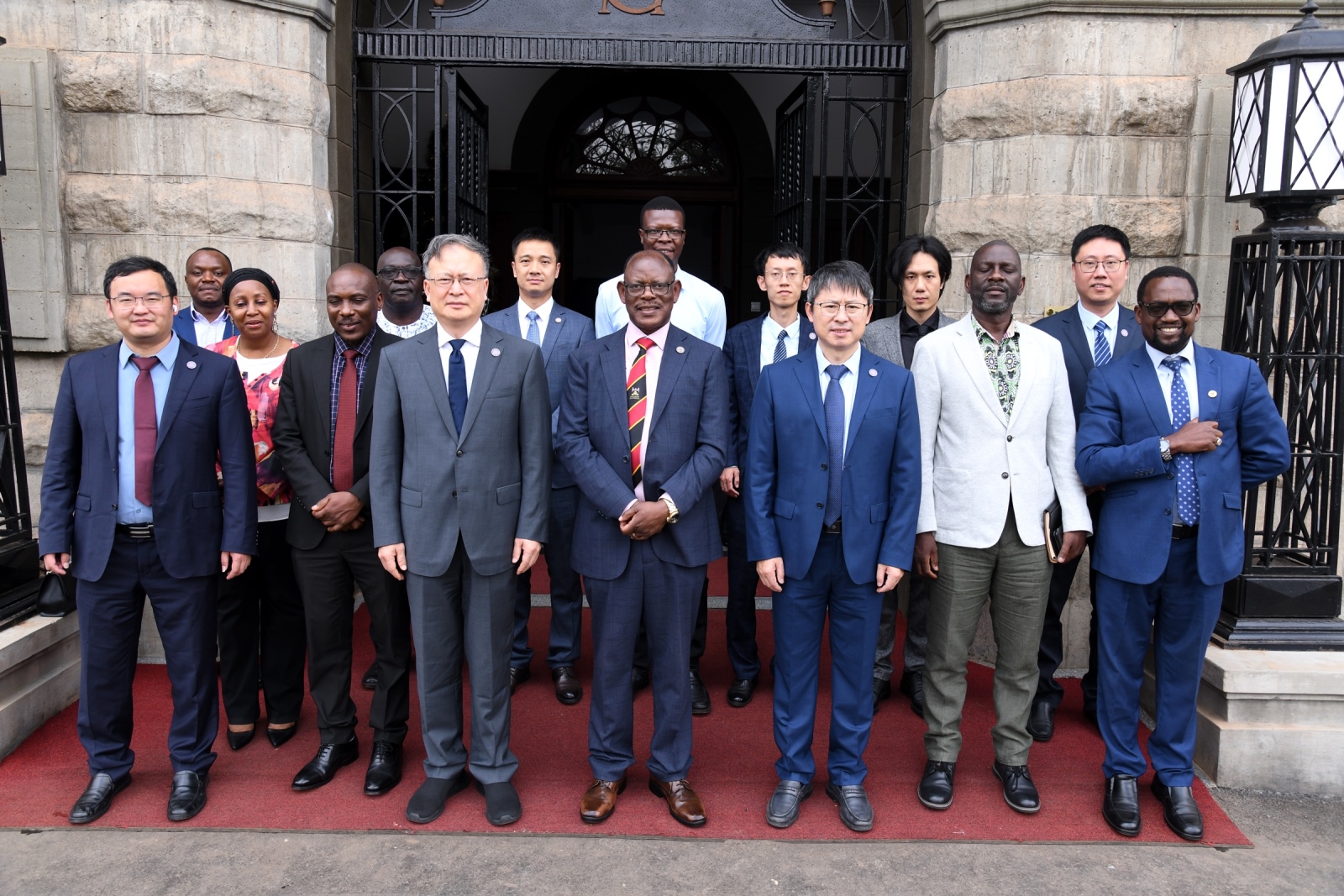
Makerere University has taken a significant step toward strengthening global research collaboration following a high-level meeting between Vice Chancellor Prof. Barnabas Nawangwe and a delegation from Tsinghua University’s Hefei Institute for Public Safety Research, one of China’s leading centres of excellence in disaster prevention, public safety, and emergency management. The engagement marked a renewed commitment to advancing scientific cooperation between the two institutions, particularly in addressing complex environmental and public health challenges that continue to shape national and global development.
A Partnership Anchored in Shared Challenges and Global Priorities
In his remarks, Prof. Nawangwe emphasized that the concept of comprehensive public safety, spanning natural disasters, epidemics, infrastructure failures, and social risks, is increasingly relevant to all colleges and disciplines at Makerere. Uganda’s experience with epidemics such as Ebola, cholera, and COVID-19; frequent landslides in mountainous regions; flooding events; and rising traffic-related incidents place the University in a unique position to contribute applied research, community-based insights, and local knowledge to a global scientific dialogue.
He noted that the Tsinghua presentation revealed new areas of alignment, particularly in epidemic modelling, early-warning systems, and integrated emergency management, areas where Makerere’s public health scientists, medical researchers, and social scientists have extensive expertise.
“This collaboration offers meaningful opportunities for nearly every college at Makerere,” he noted. “Public safety touches the environment, public health, engineering, social sciences, ICT, humanities, and urban planning. The challenges we face as a country make this partnership both timely and essential.” Prof. Barnabas Nawangwe noted.
Tsinghua University: A Global Leader in Comprehensive Public Safety.
The delegation from Tsinghua University outlined China’s national investment in Public safety over the past two decades, an effort driven by the recognition that life and security are the foundation of sustainable development. Tsinghua’s Hefei Institute for Public Safety Research has developed nationally recognised research platforms and large-scale simulation facilities dedicated to Natural disaster modelling (earthquakes, landslides, floods, typhoons, Infrastructure and urban systems safety, Public health emergencies and epidemic preparedness, Early-warning, monitoring, and emergency communication, Traffic and transportation safety, Post-disaster reconstruction and resilience planning.
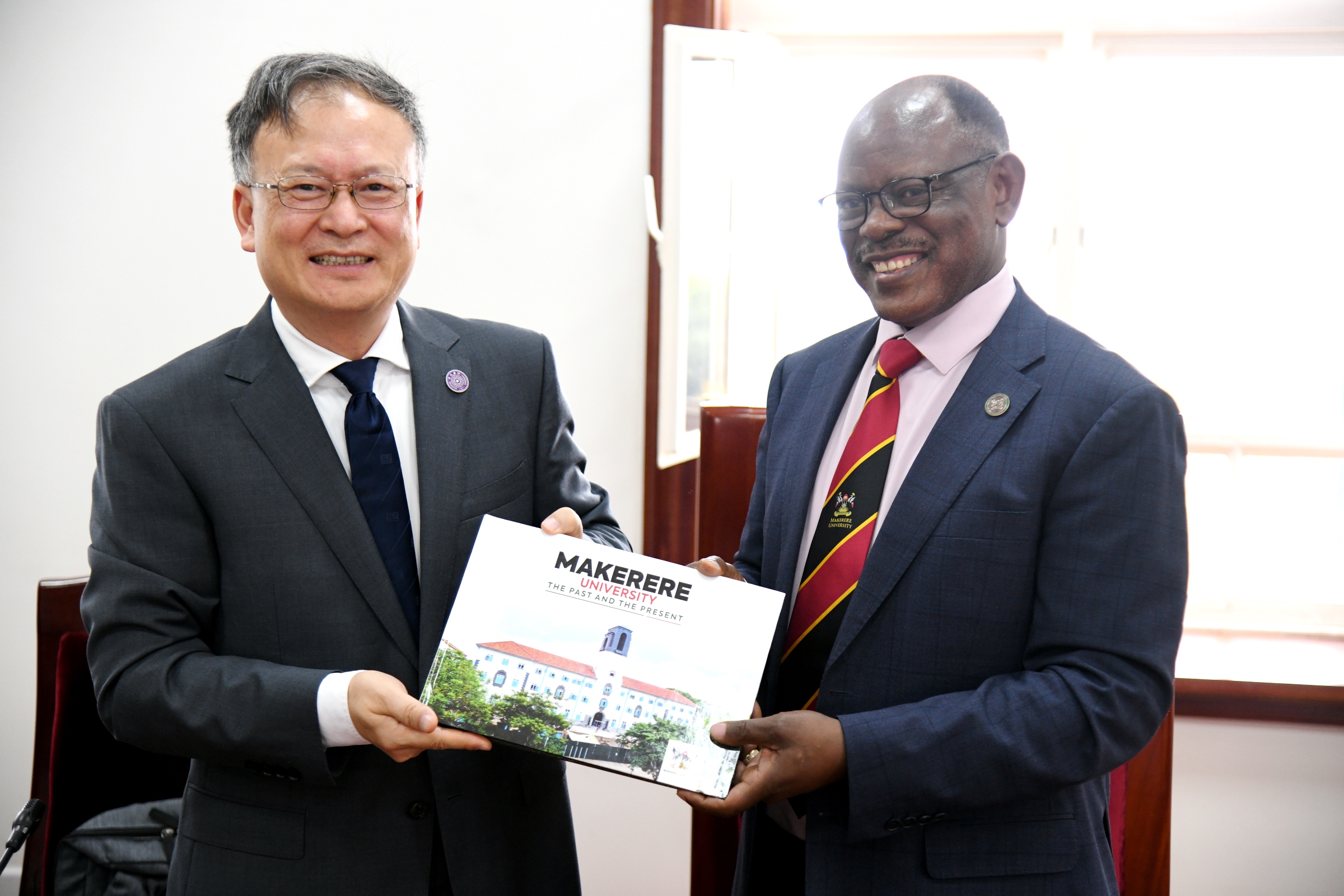
Their systems currently support over 100 provincial and municipal emergency management centres in China, underscoring their global leadership in practical, scalable solutions for disaster risk management. The delegation reaffirmed that Uganda’s lived experience with multiple hazards presents opportunities for meaningful knowledge exchange. They expressed particular interest in learning from Makerere’s work on epidemic response, community health systems, and the social dimensions of disaster management.
Emerging Areas of Partnership
The meeting identified several promising pathways for long-term collaboration:
1. Joint Research in Disaster Risk Reduction and Climate-Related Hazards
Both institutions expressed readiness to co-develop research projects on landslides, floods, urban resilience, and multi-hazard modelling, drawing on Tsinghua’s advanced simulation technologies and Makerere’s environmental expertise and geographic field realities.
2. Public Health Emergency Preparedness and Epidemic Response
Makerere’s renowned public health schools and research centres will collaborate with Tsinghua on epidemic prediction, early-warning systems, and integrated preparedness frameworks, leveraging Uganda’s decades of experience managing high-risk disease outbreaks.
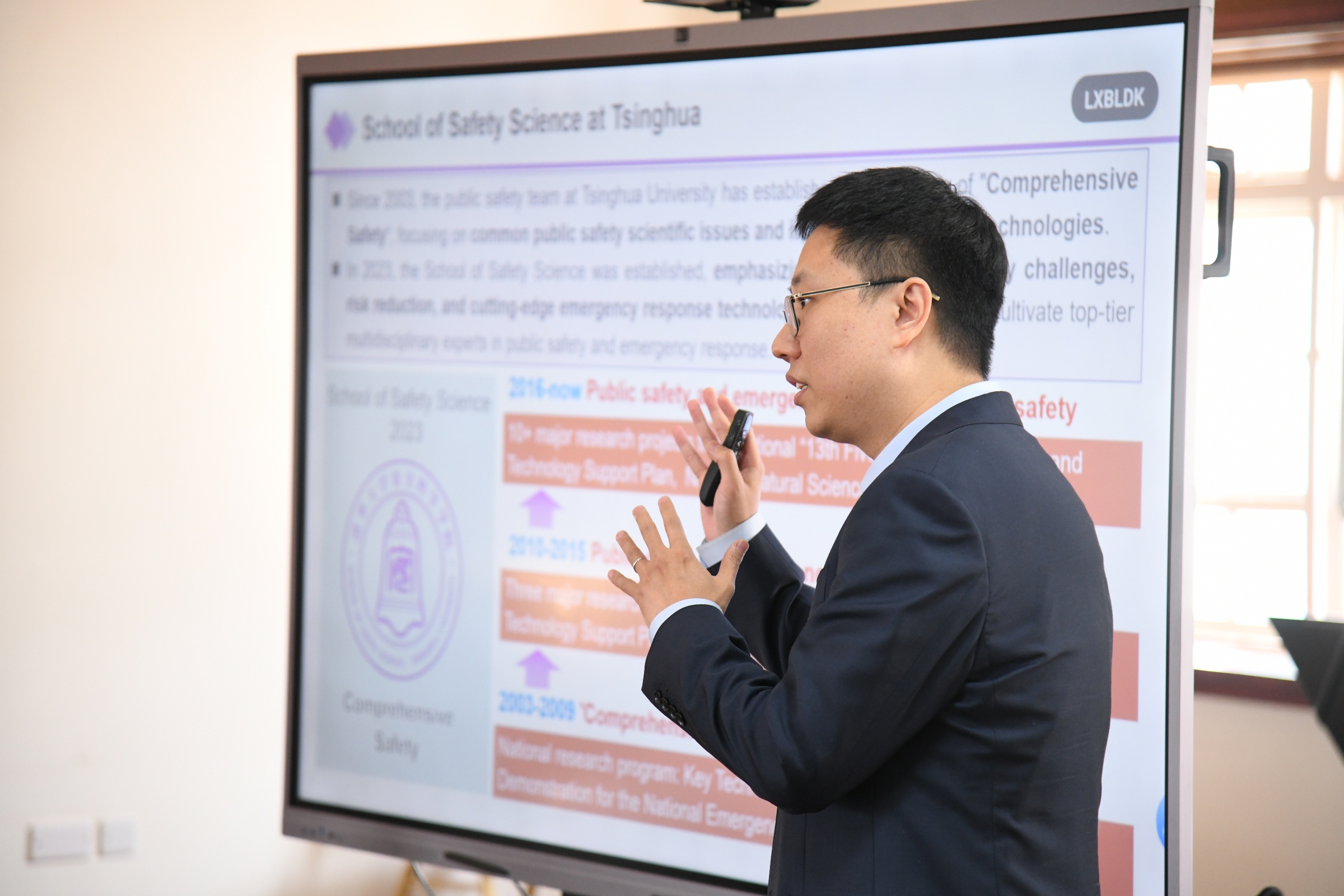
3. Infrastructure and Urban Safety, Including Traffic Systems
With Uganda experiencing rapid urbanisation and high rates of motorcycle-related road incidents, Tsinghua shared insights from China’s own transformation, including infrastructure redesign, transport modelling, and public transit innovations. Collaborative work in this area would support city planning and road safety interventions in Kampala and other urban centres.
4. Academic Exchange and Capacity Building
Both sides expressed interest in student exchanges, staff mobility, co-supervision of postgraduate research, and specialised training programmes hosted at Tsinghua’s world-class safety research facilities.
5. Development of a Joint Public Safety Laboratory at Makerere
The institutions are exploring the establishment of a collaborative safety research platform in Uganda. This initiative could serve as a regional hub for innovation in emergency management, environmental safety, and technology-driven risk assessment.
Towards a Long-Term, Impactful Collaboration
The meeting concluded with a shared commitment to develop a structured partnership framework in the coming months, supported by both universities and aligned with Uganda–China cooperation priorities. Both teams acknowledged that the partnership must yield tangible results that enhance community resilience, bolster national preparedness systems, and foster scientific capacity for future generations.
Prof. Nawangwe commended Tsinghua University for its willingness to co-invest in research and capacity building, noting that such collaborations position Makerere not only as a leading research institution in Africa but as an active contributor to global scientific progress.

“This partnership has the potential to transform our understanding of the science of public safety to deliver solutions that safeguard lives.” Prof. Barnabas Nawangwe noted.
“It aligns perfectly with Makerere’s mission to be a research-led, innovation-driven university responding to the world’s most urgent challenges.” He added.
As part of this strategic partnership engagement, Makerere University will, on Wednesday, 17th December, co-host the Makerere University–Tsinghua University Symposium on Public Safety and Natural Disaster Management. The symposium will run from 8:00 AM to 2:00 PM in the University Main Hall, Main Building.
This symposium represents a deepening of collaboration not only between Makerere University and Tsinghua University, but also a broader strategic partnership between Uganda and the People’s Republic of China.
During the event, H.E. Zhang Lizhong, Ambassador of the People’s Republic of China to Uganda, together with the State Minister for Higher Education, Government of Uganda, will officially launch the China–Uganda Belt and Road Joint Laboratory on Natural Disaster Monitoring and Early Warning. The Laboratory will be hosted at Makerere University, positioning the University to play a central role in strengthening Uganda’s and the region’s capacity for natural disaster preparedness, public safety, and emergency management research.
Caroline Kainomugisha is the Communications Officer, Advancement Office, Makerere University.
Health
Three Years of Impact: Makerere University Health User Committee Presents Status Report
Published
2 weeks agoon
December 12, 2025By
Eve Nakyanzi
Makerere University on 11th November 2025 marked a significant milestone as the Health User Committee (Mak-HUC)—established by the Vice Chancellor in 2022 as part of his strategic mandate to strengthen and oversee the University’s health service delivery—formally handed over its three-year report. The event highlighted the committee’s achievements in guiding, monitoring, and improving Makerere University Health Services, presenting a record of progress that has reshaped confidence, strengthened systems, and expanded care for staff and students.
A Call for Integrated and Sustainable Health Services
The Vice Chancellor Prof. Barnabas Nawangwe emphasized the need for a more integrated, efficient, and sustainable approach to delivering health services for Makerere University staff and students. He noted that while the University does not receive supplies from the National Medical Stores system, its community remains entitled to quality care, urging renewed consideration of how essential services—such as drug access, surgical limits, and special medical cases—can be better supported. He highlighted the importance of practical costing models, especially for extending care to staff dependents, and called for flexibility in managing exceptional cases like complex surgeries or referrals abroad.
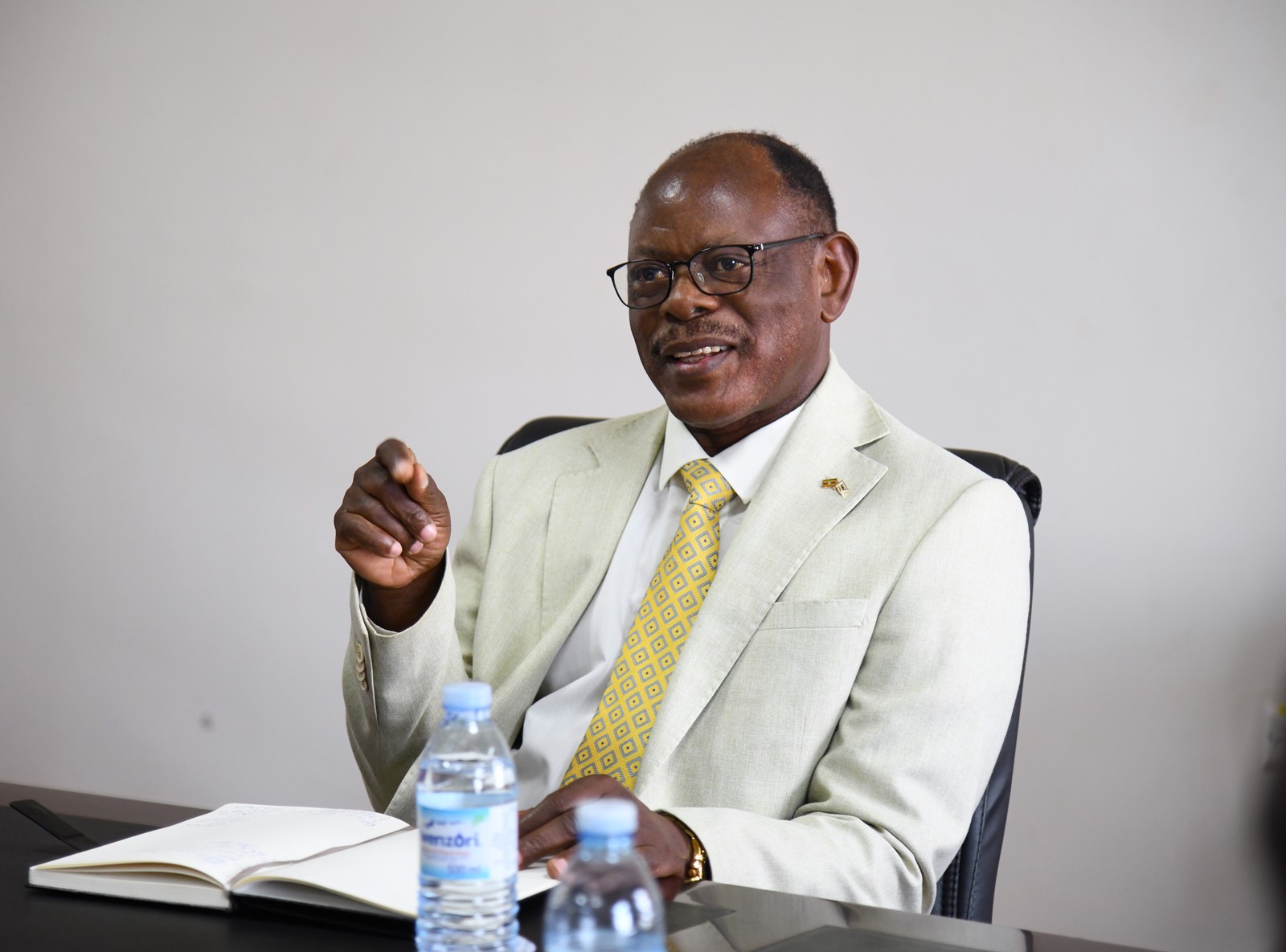
The Vice Chancellor also underscored the urgent need to modernize the University Hospital, proposing that Makerere begin incrementally establishing a teaching hospital using existing facilities and leveraging expertise of highly qualified consultants the College of Health Sciences (CHS). He reiterated that government budget ceilings remain a major constraint, but encouraged the committee to develop a concept that could be presented to Council and later supported through strategic engagement with the Ministry of Finance, Planning and Economic Development. Throughout his remarks, he applauded the Mak-HUC for its work and reaffirmed that even with the creation of a professional hospital board, the committee must remain central in representing service users.
Aligning Health Services with Sustainable Insurance Models
Prof. Bruce Kirenga the Principal College of Health Sciences responded by clarifying the committee’s efforts to align Makerere’s health services with real insurance models, including cost projections for covering additional family members and encouraging voluntary staff contributions where necessary. He acknowledged the complexity of expanding service coverage—especially in cases of chronic illness or high-cost procedures—but emphasized the committee’s commitment to cautious, sustainable planning. He confirmed that the College is working closely with the Hospital to improve services, attract specialists, and integrate students into the health system, a model that naturally draws academic staff into clinical roles without imposing unrealistic obligations.
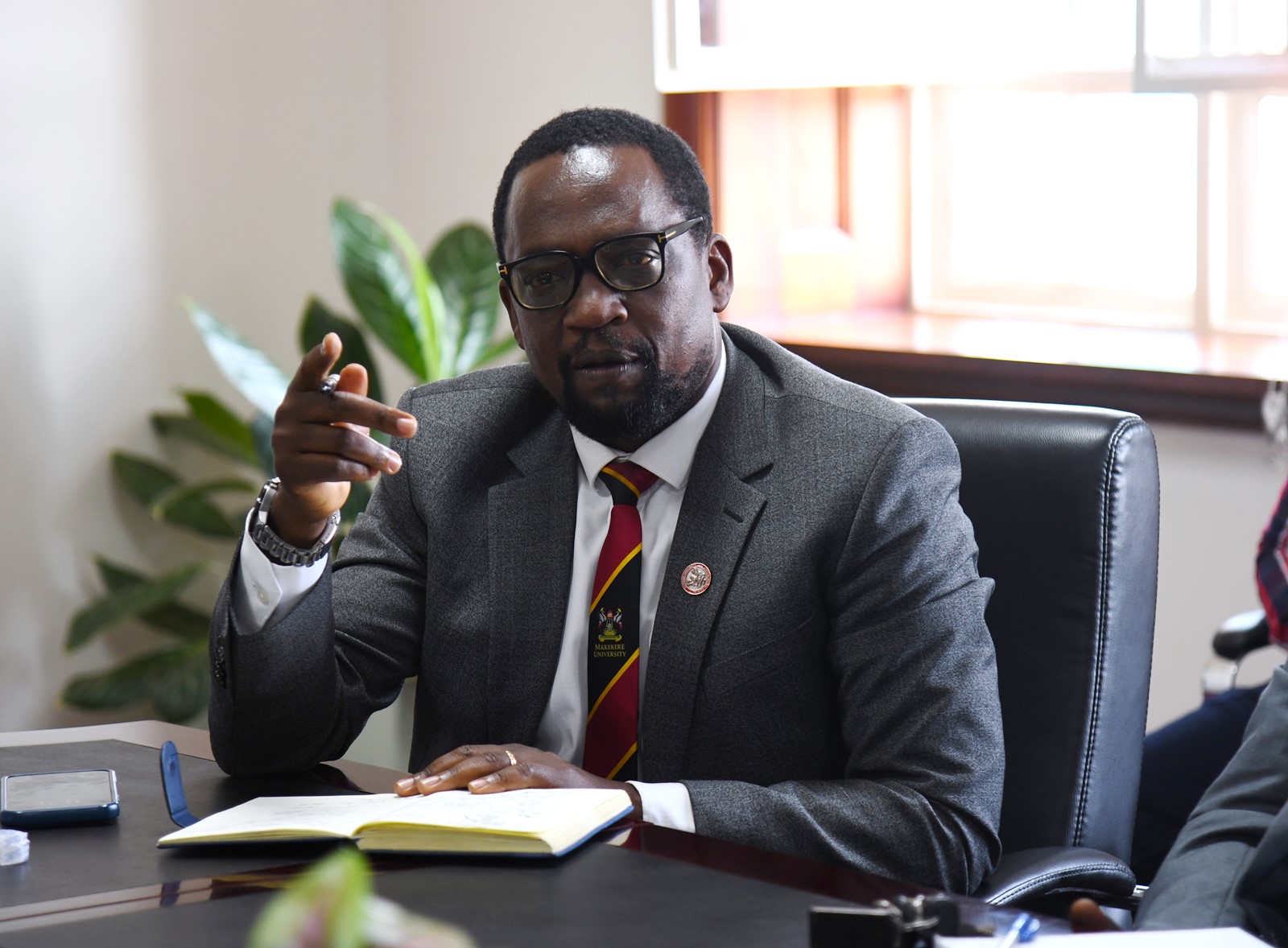
Prof. Kirenga also noted the College’s ongoing assessments of facility needs, including dialysis, ICU expansion, and equipment placement, stressing that the ultimate goal is a unified, well-structured health network across the University. He welcomed the Vice Chancellor’s support for transforming existing facilities into a teaching hospital and pledged to refine proposals that reflect both current realities and long-term institutional needs.
Committee Chair Reflects on Three-Year Achievements
Dr. Allen Kabagyenyi, Chair of Mak-HUC, reflected on the three-year journey with gratitude and pride, noting that the committee not only fulfilled its terms of reference but exceeded expectations. She highlighted major gains made under the Vice Chancellor’s support, including transforming the University Hospital into a self-accounting unit—an intervention that unlocked smoother financial management and accelerated service delivery. Dr. Kabagyenyi commended the strong collaboration with the Hospital administration, Human Resources Directorate, and other units, which ensured staffing stability even during institutional transitions.

She pointed to the expansion of referral partnerships—now totaling 29 health facilities nationwide—as a crucial achievement that guarantees continuity of care for staff and students wherever they are. She also emphasized the committee’s work in guiding policies for specialized treatment and cross-border care, strengthening fraud-prevention systems, and advancing digital transformation through an integrated health information system and the new Makerere University Health Services (MakHS) website. Dr. Kabagyenyi noted that these improvements have directly benefited staff and enhanced the overall quality of care, supported by close collaboration with the College of Health Sciences and access to some of the country’s best consultants. She concluded by underscoring the ongoing need for a comprehensive University Health Policy and expressed deep appreciation to the Vice Chancellor and University Management for their unwavering openness and support—attributes she credited for the committee’s success.
Highlights of Service Growth and Infrastructure Upgrades
The Chief, Makerere University Health Services, Prof. Josaphat Byamugisha, highlighted the significant progress achieved under the Health User Committee’s oversight, noting especially the steady rise in service utilization and renewed confidence among staff and students. He emphasized that trust in the University Hospital has grown organically—built not through advertising, but through improved patient experience, stronger systems, and word of mouth.

Prof. Byamugisha pointed to major achievements such as expanded Out-Patient Department (OPD) attendance, better student access to care, enhanced infrastructure including modernized theatres capable of complex procedures, and upgraded laboratories supported through framework agreements that ensure continuous equipment renewal. He noted that specialized clinics, increased inpatient capacity, and expanded referral networks have strengthened the Hospital’s reach and responsiveness. The Hospital is also taking on more research work and clinical training, partnering with units such as optometry, internal medicine, and the Clinical Trials Unit, with new collaborations—like the MasterCard Foundation—driving further growth.
He reaffirmed that the long-term vision of establishing a fully-fledged Makerere University Teaching Hospital is taking shape through coordinated efforts with the College of Health Sciences. Prof. Byamugisha credited the Vice Chancellor’s support for enabling these strides and expressed deep appreciation to all stakeholders contributing to the continued improvement of health services for the entire University community.
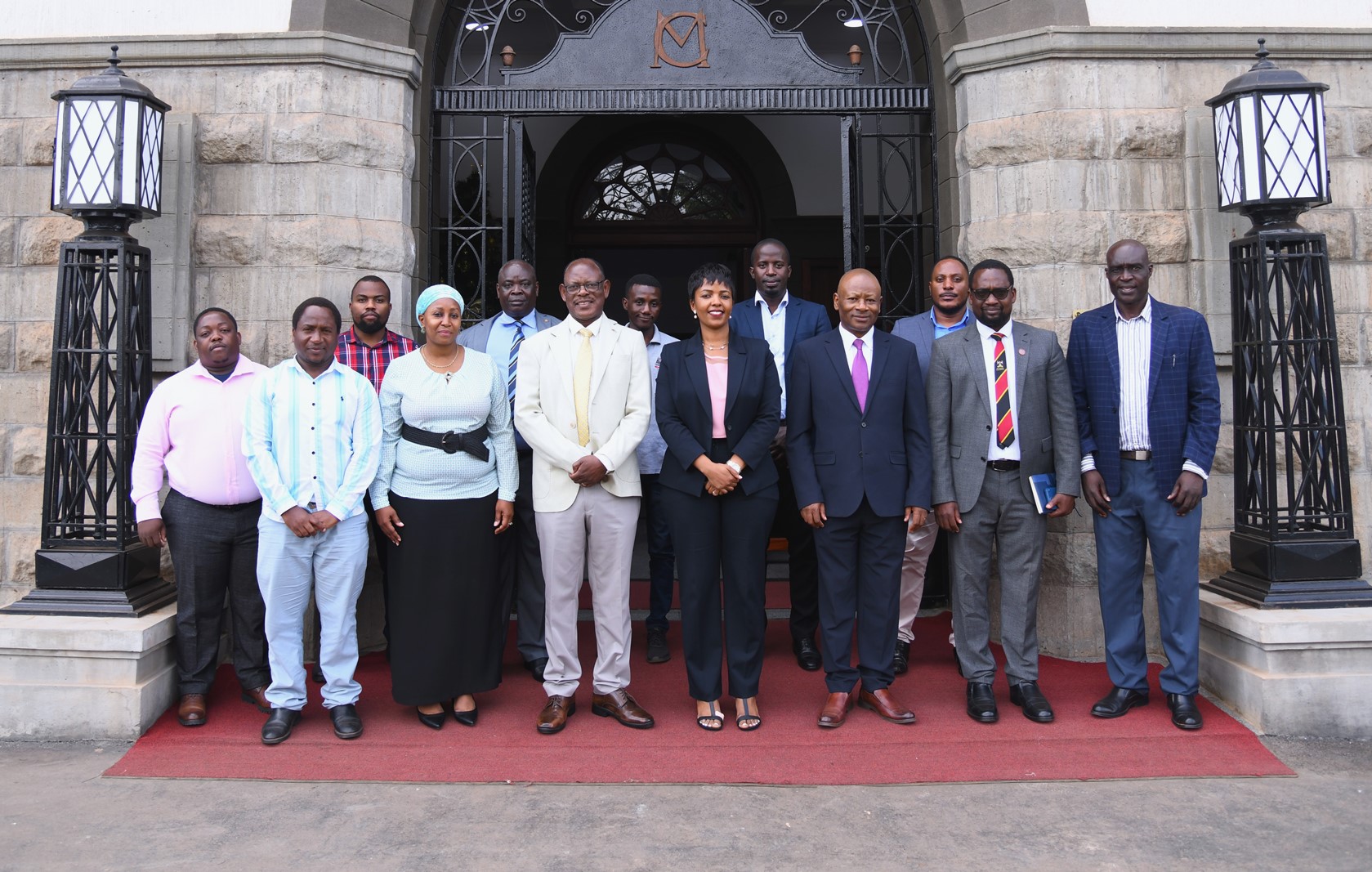
DICTS Unveils Modular Information System & Health Services Website
The Directorate for ICT Support (DICTS) presented the newly developed Makerere University Integrated Health Management Information System (MakIHMIS), designed around a modular system that streamlines all hospital processes. The platform integrates eight functional modules, including registration, triage, clinician workflows, inventory and medicines management, pharmacy dispensing, laboratory information management, user management, and linkages to both the Academic and Human Resource Management Information Systems ACMIS and e-HRMS respetively. Most of these modules are already active, enabling smooth patient registration, accurate record-keeping, real-time inventory tracking, and seamless access to student and staff data without duplication. Only two modules—land and insurance—remain under development before the system becomes fully end-to-end. The MakHS website on the other hand features information about hospital services, events, research activities, and staff profiles, offering both the university community and the public a centralized and efficient digital gateway to the hospital’s operations.

The term of the outgoing committee has officially concluded, and preparations are now underway for the incoming committee to assume its duties and continue advancing the work ahead.
Trending
-

 Research1 week ago
Research1 week agoMakerere University Launches Knowledge-Sharing Platform to Drive Innovation and Economic Growth
-

 General2 weeks ago
General2 weeks agoMakerere University Leaders Call for Excellence in Research and Supervision as Academic Staff and PhD Students Receive Certificates
-

 Health2 weeks ago
Health2 weeks agoMakerere University Explores Strategic Partnership with Tsinghua University in Safety Science, Disaster Resilience and Public Health
-

 Business & Management1 week ago
Business & Management1 week agoEfD Uganda Marks 2025 Milestones, Sets Strategic Path for 2025–2029
-

 Health1 week ago
Health1 week agoMakerere University and Tsinghua University Launch Landmark China–Uganda Joint Laboratory on Natural Disaster Monitoring and Early Warning
